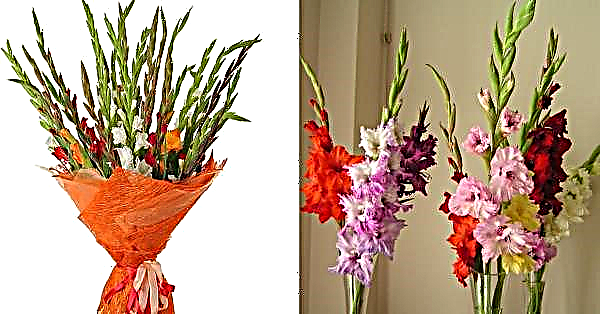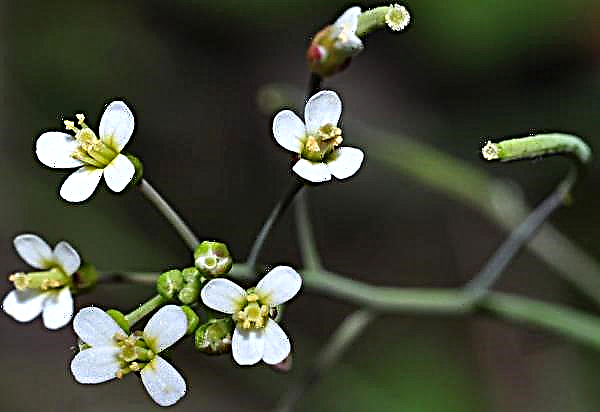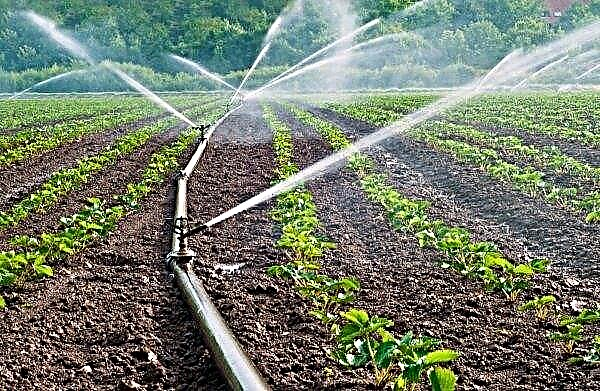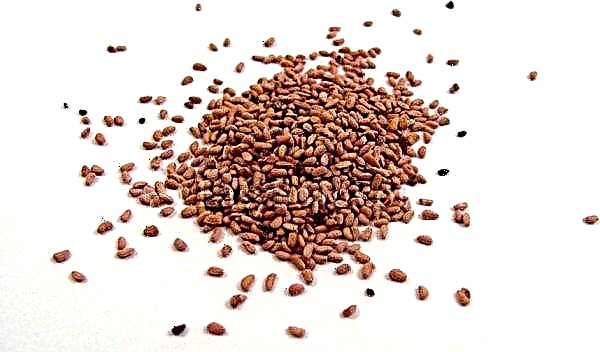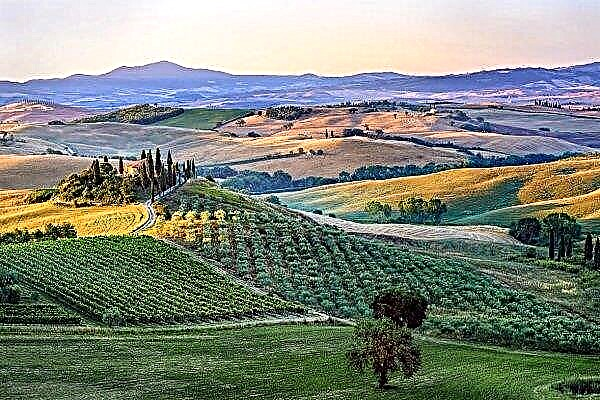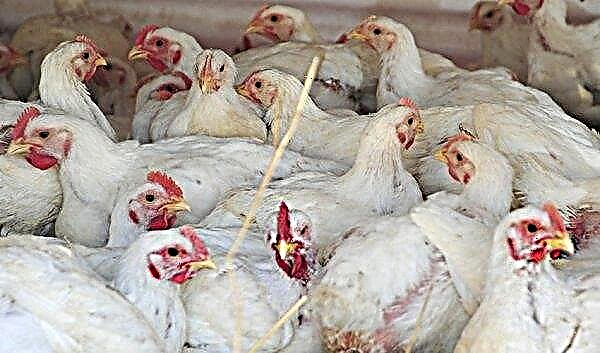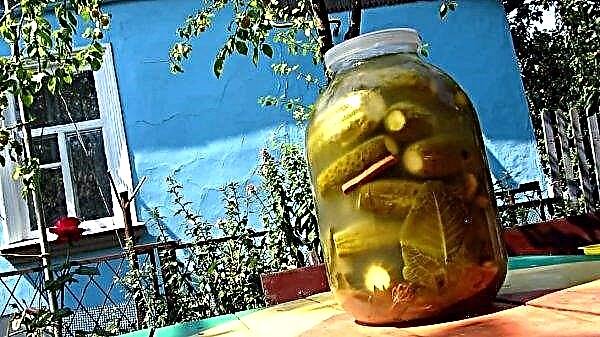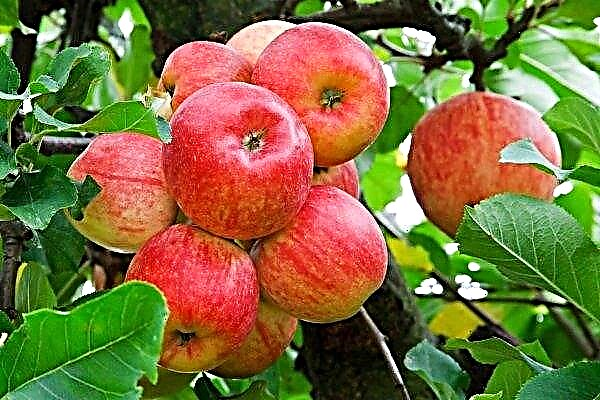When choosing melon varieties for growing on a personal plot, you should pay attention to the Ethiopka variety (another name is Chamomile). This melon has a fragrant sugar pulp and a pleasant taste. The variety is also suitable for the industrial scale of cultivation due to its good shelf life and transportability. More details about Ethiopia and its cultivation later in the article.
History and description of the variety
Melon is a widespread and universally grown culture: it has been known since ancient times, but then the fruits were smaller and resembled cucumbers in appearance and taste. Ancient melons grew along the caravan trails of Asia. The time of the appearance of sweet varieties is not exactly established. Probably, the caravaners began to select more delicious and sweet fruits and grow them at home, thus obtaining prototypes of the varieties of melons now known.
Medieval engravings indicate that melons were already in Central Asia in the middle of the 9th century - in Khorasan and Persia. Spread throughout Asia and Africa, the plant came to Europe no earlier than the 15th century. Probably, climatic causes have become a stopping factor in the expansion of the fetus.
Did you know? Unlike other varieties, Ethiopka does not “sunbathe” in the sun, which means that its peel is always evenly colored.
Selection
To imagine what Ethiopia is, you can look at images of African melons. Their characteristic feature is a round shape with distinct convex segments. For the similarity of forms, the yellow fruit got its name.
Consider where the variety grows. Ethiopia was bred by Russian breeders in 2013 and is not directly related to Africa. The aim of the selection was to adapt the melon plant to a temperate climate.
Ordinary melon originally originated in Central Asia and spread throughout the continent. Acceptable for its growth conditions: hot long summers and plenty of sunshine. Features of selection determine the regions where Ethiopia is grown - from southern to northern latitudes, where it can be grown in a greenhouse: early maturity and adaptation to climate make this quite possible. Breeders also provided for the possibility of growing plants in seedlings, which some species do not have.
Characteristic
Like other melons, Ethiopia grows on the vine. The vegetative period of a plant lasts 70–80 days from the moment of emergence of seedlings. Compact bushes occupy a relatively small area and do not have long lashes. The diameter of the vines is 2-3 cm across. The bright yellow melon flowers open at dawn and wither during the day. In the morning hours they can be pollinated by bees. Ethiopia is a self-pollinated plant, so 100% of the flowers give 100% of the fruit. The plant is resistant to powdery mildew and tolerates aphids.
The weight of the fetus depends on the growing conditions, soil nutrition and ranges from 3 to 7 kg. The more the melon receives sunlight and heat, the larger the fruit. Harvest from one bush is 5-6 round fruits. The peel is yellow, in the recesses it may remain greenish or lighter. The surface is rough, covered with a fine mesh of light yellow color. At the initial stage of development, the fruits have a grassy taste and only at the end of ripening acquire sweetness. Sweet aromatic flesh is very juicy, but quite dense to the touch. The wonderful honey taste of melon is also noted. The variety is considered one of the most fragrant.Did you know? Now we widely use plastic and glass containers for drinks, and a few millennia ago, ancient people made dishes and bottles from pumpkins and melons.
Advantages and disadvantages
- Grade advantages:
- can grow in temperate climates;
- grown by seedlings and seeds;
- has a great taste and aroma of fruits;
- characterized by high productivity;
- Suitable for transportation and storage for a month after harvest.
- Disadvantages of Ethiopia:
- with a lack of light and heat, it forms small fruits;
- it is not advisable to subject to sudden changes in temperature, therefore, in areas with a short growing season, melon should be grown in a greenhouse.
Calorie, benefit and harm
Melon contains 25–29 kcal and can be used in diet food. The composition of the fetus has an almost complete set of vitamins and all the main trace elements: calcium, magnesium, zinc, copper, iron, phosphorus and others.

What is useful melon:
- The described fruit is 92% not ordinary, but structured water. It is better adapted to penetrate into the cells of the body, improving metabolism, removing toxins from the body and supplying cells with food.
- Due to its composition, melon saturates the body well, providing a feeling of fullness without excessive calorie intake.
- Fruit can reduce the risk of a heart attack or stroke by lowering blood pressure and cholesterol.
- Prevents age-related degeneration of the organs of vision due to its antioxidant and anti-inflammatory properties.
Did you know? Some biologically active compounds in melon, including lycopene, can prevent the formation of cancer cells, although studies in this direction are still underway.
Contraindications and harm melons:
- It is not recommended to use with dairy products or alcohol, so as not to cause intestinal upset.
- It is not advisable to include nursing mothers in the diet due to the high sugar content.
- It is highly undesirable to use diabetes patients for the reason described above.
- Caution should be exercised in melon and in people with stomach ailments.

How to choose a ripe melon when buying
Choosing a melon is not easy: the color of the peel cannot tell about the taste of the pulp, and you will not be able to try several fruits when buying.
But still, there are a number of recommendations that can help in choosing:
- Inspect the fetus for defects. It should not have spots, cracks or other damage.
- Check the color of the peel. In Ethiopia it is homogeneous. A shiny peel is a sign of an unripe melon. The texture should be golden or orange. Avoid fruits with shades of green or white.
- Pick up a few fruits. Determine your average weight and buy one that is heavier.
- When tapping a melon, the correct sound should be the same as from a hollow object.
- A good melon smells of freshness with a touch of sweetness in the place where the stalk was attached.
Did you know? 25% of the melons consumed worldwide are grown in China. It produces more than 8 million tons of melon every year.
How to grow yourself in the garden
Most varieties require approximately the same conditions for growing. Melons grow well in warm weather, with plenty of sunshine and plentiful watering. Under the right conditions, you will get a high yield: up to 6 ripe fruits from one bush.
Melons are quite delicate plants, so in the northern regions they are grown in a greenhouse. They also need a good dose of fertilizer when planting in the ground and during the growing season.
Landing technology:
- Wait for air and soil to warm up. By the time of landing in the soil, the soil should warm up above + 14 ° С, and the air - up to + 21 ° С. In a temperate climate, sowing is carried out from late May to early June. Do not plant plants if there is a risk of frost: the seeds will not germinate or die.
- Prepare a place to land. The depth of the pits is about 0.3 m. The distance between them is about 0.51 m.
- Sow 5-6 seeds in each pit. Between them there should be a distance of 10-15 cm.
- Protect crops from pests and weeds with a mulching layer. Create film shelters in order to optimize the microclimate near the seedlings.

The timing
In most temperate regions in winter, the soil deeply freezes and slowly warms up in the spring. And melons must grow in warmed soil to form strong bushes.
From the appearance of seedlings to the crop, Ethiopia grows about 70–80 days. Therefore, it is advisable to plant seedlings in April so that at the end of May it can be planted in the ground or in a greenhouse. The air temperature should not fall below + 20 ° C in the room, humidity - about 60%. Melon can be planted in the ground until mid-June. Such a crop will have time to grow and mature before September.
Did you know? Breeders obtained a cubic form of melon. Packaging and transporting this type requires less effort than round fruits. But such a melon is more expensive.
Seat selection and crop rotation
The acidity of an ideal soil is 6.0–6.8 pH. Choose a sunny, well-ventilated area. The soil must be drained to provide better root system development. If the plot is acidified, add dolomite flour or lime to the soil for deoxidation. The air temperature at the time of planting should be at least + 21 ° C, soil temperature + 13 ° C at a depth of 10 cm. Before planting, cover the garden bed with a dark film to speed up heating.
In order to increase the nutritional value of the soil, you need to make rotted manure or humus in each hole when planting. Do not use fresh manure, as it may contain harmful bacteria and cause increased weed growth.
Melon consumes a lot of nutrients during the growing season. Therefore, they prepare a special nutrient substrate: from 3-5 cm of compost or well-rotted manure and ordinary garden soil. Then fed with fertilizers every 2 weeks.
There is another way of planting - on fresh manure. Dig a hole of 0.3 m, lay 20–22 cm of fresh manure at the bottom, and 10–15 cm of soil with compost on top. This creates a pillow with a high content of nitrogenous fertilizers, which also produce the additional heat needed by the melon for development.
The crop rotation technique is based on pest control of garden crops. Therefore, potatoes, late cabbage are considered good predecessors of melons. But it will be more correct to plant wheat or legumes on the beds in the fall. Their root system loosens the soil well and collects the nitrogen it contains. Autumn planting leaves no time for flowering, which will create a kind of pantry of nitrogen compounds for the spring planting of melon. The cycle duration for the melon crop rotation is 5 years.
Did you know? Melon — it is the common name for any of the many varieties of sweet fruits in the Pumpkin family. They all grow on vines.
Sowing pattern and depth
Melons need space for good development. Therefore, planting is carried out at a distance of 1 m from each other. To save space, you can plant plants at a distance of 0.8 m using a trellis (trellis) for support. The size of the support for 1 plant is about 6 x 2.5 m. It must be located at an angle to the sun. If you place it over a reflective surface, then you will increase the amount of light reaching the leaves and protect the plants from the main pest - aphids, which lose their orientation in such conditions.
In large areas, the following planting patterns (in meters) are adopted: 2 x 1, 2.8 x 1, 1.5 x 0.7, 1.4 x 1, 1.8 x 1. The proposed distances depend on the gauge the machine that processes them. When calculating your distance, keep in mind that each plant needs about 1 m of free space.
Depth of immersion of seeds - up to 5 cm in light sandy soils. If the area is clay, it is advisable to dilute the soil with sand, other drainage materials. If this is not possible, close the seeds to a depth of not more than 3 cm.

How to care in the open ground
After planting, the plants are covered with a film cover to prevent contact with pests and create a warmer microclimate near the vines. This is most important in cooler regions where there is a sharp contrast between day and night temperatures. Covering the beds with a black film with planting melons in cross-shaped sections on the film will also allow maintaining the optimum soil temperature.
Crop Care Instructions:
- Water melons every 2-3 days throughout the summer. Make sure there is enough moisture if a period of drought has begun. For clay soils, use mulching materials (sawdust, straw) so that they absorb the excess moisture and then gradually give it to the plant. As you ripen, reduce watering - this will allow melons to gain more sweetness.
- Fertilize every 3-4 weeks. Optimum fertilizer is a balanced composition of nitrogen, potassium and phosphorus in equal proportions.
- Ethiopia is a self-pollinated variety, so you do not need to do anything in order to accelerate the formation of fruits.
- If trellis is used, tie the vines with soft materials so as not to deform or break them.
- Watch for signs of pests or diseases. If there is a risk of infection, use protective shelters. Note the appearance of any white, “fluffy” and other spots on the leaves and stems. Ethiopian is resistant to powdery mildew, but this does not exclude the possibility of infection. If problem areas are found, remove all affected parts of the plants and spray fungicide or Bordeaux on the remaining vines.
Important! Recent studies have shown that melons act as diuretics in the body and can lower high blood pressure.
Temporary shelter
Temporary film cover is necessary for melons to optimize the temperature regime. The size of the shelter is about 0.7 × 0.7 m. There are no special requirements for the type of construction, material and thickness of the film, but the thicker the film, the higher the temperature inside the shelter. Shelters are often used in regions with a cool spring - from the moment seedlings are planted in the ground until the average daily temperature reaches around + 20 ° С.
Watering
It is advisable to use drip irrigation technology: they allow you to economically consume water, directing it to the roots of plants. If not, use a regular hose, but with a small pressure of water. Do not fall on the leaves, so as not to create a favorable environment for the development of phytopathogens.

If possible, then water the plants with warmed water, since cold water is a source of stress for most plants. The frequency of watering is 2-3 times a week, the depth is about 10 cm.
Important! Excess moisture during the last two weeks of ripening can cause fruit to rot.
Top dressing
Do not fertilize melons until their height reaches 10 cm. Apply balanced fertilizer (phosphorus, nitrogen and potassium in equal proportions): 10–10–10 or 5–5–5. The numbers indicate the amount of each substance in the mixture. Dry fertilizers are usually used. They need to be scattered around the bush in a radius of 0.3 m. Do not allow granules to get on the plants. Pour fertilizer so that the granules dissolve and soak into the soil. The frequency of treatment is every 3-4 weeks. It is permissible to use aqueous solutions of fertilizers.
After the formation of fruits, the composition of the top dressing can be changed by reducing the proportion of nitrogen by half. Nitrogen is responsible for the formation of leaf mass. Leaves will consume nutrients while reducing the ability of the plant to form fruit.
Fertilizer rate for large areas:
- 4 kg of nitrogen;
- 2 kg of phosphorus;
- 7 kg of potassium;
- 1 kg of calcium.
Important! Since the surface of the melon may contain harmful bacteria, such as salmonella, it is recommended that you thoroughly wash and wipe the fruit before cutting and eating.
Bushes
The technology of forming a bush is to create a compact plant of several lashes with a uniform distribution of fruits. Nip the main shoot over 3 leaves. Lay the resulting side vines on the garden bed. Pinch each of them over 6 sheets.After the fruit is formed, remove the extra length of the lashes. Those vines on which there are no ovaries can also be removed.

Soil care
Soil care when growing melons consists of:
- weed weeding;
- loosening;
- mulching.
Weed growth accompanies any sites, and the more acidic the soil, the more they are, so they are weeded out or covered with mulch in order to prevent the development of harmful plants. Loosening and weeding of weeds is carried out the day after watering. Loosening is necessary to a depth of 5 cm so as not to touch the root system.
Loosening allows:Did you know? Melons Yubari King (Yubari King) — the most expensive in the world: they are known for their unique sweet taste and grow in only one small region of Japan. The price per unit can go up to $ 10,000.
- provide oxygen access to the roots;
- remove weeds.
Mulching allows you to save moisture after watering and protect the root system from pests. Sawdust, straw, agrofibre and other materials are used for coating. Mulch should close the approaches to the roots of the plant, but not interfere with watering.

Harvesting
Ethiopia matures 70–80 days after emergence. The variety is characterized by a simultaneous ripening of fruits. A week before harvesting, watering is stopped: at the same time, you accumulate sweetness in fruits and increase the percentage of keeping time. Waterlogged fruits cannot be stored for more than 2 weeks after harvest.
Ripe melon is well torn from the vine. By the time it is ready, the stem dries up and cracks form on it - this is the main sign of ripeness. When approaching the bush, a steady honey aroma of melon should be felt. The fruits acquire a uniform bright golden color.
If melons are not used immediately, and they are planned to be stored for 1 month, then leave about 3 cm of the stalk on each plant to prevent decay. The longer you store melons, the greater the likelihood of spoilage, so try to process the harvested crop no later than 1–1.3 months after harvest. Melons can be prepared for the winter in the form of jam, jelly and other sweet dishes.
Choosing varieties for planting, you can opt for Ethiopka melon - this compact plant will provide you with tasty and healthy fruits in any climatic zone. The agricultural technology of its cultivation does not require special efforts and is quite accessible even for beginners.
Network user reviews
ADVANTAGES: Very fragrant, unusual shape.
DISADVANTAGES: Taste for the amateur.
Today, the first time I decided to try the Ethiopian melon. Previously, they constantly bought Torpedo and Kolkhoznitsa. And then I decided to taste something new. Melon is as follows: From the side you can safely think that this is an ordinary pumpkin. Only now her fragrance is clearly melon. In the photo, the melon is about three kilograms in weight. Cut, clean the seeds, and try: It smells cool, but the taste is clearly for everybody. What is it unusual. For me, it is very similar in taste to the "Collective Farm Girl". Or am I just not used to such melons? My daughter really liked it. It is interesting to know, do you like such a melon? Thanks for a moment of attention. The choice is yours)


